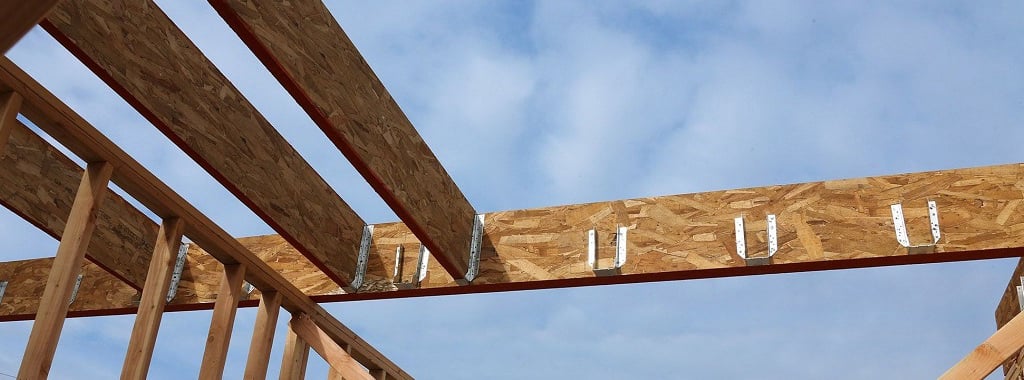The Evolution of Roof Joist Design
Traditional roof joists, typically made of timber, have been used for centuries to support roof structures. These wooden beams were straightforward and functional, designed to bear the weight of roofing materials and resist the pressure from snow, wind, and other environmental factors. However, as building practices advanced and architectural styles became more diverse, the need for more sophisticated roof joist systems arose. Timber, although still in use, was found to be limited when it came to accommodating larger spans or meeting modern environmental sustainability standards.
The shift towards more durable materials, such as steel and engineered wood, marked the first significant step in the advancement of roof joist engineering. These materials offered increased strength, reduced weight, and greater flexibility, allowing architects to explore innovative building designs that were not possible with traditional timber joists. The development of engineered wood products, such as laminated veneer lumber (LVL) and parallel strand lumber (PSL), further expanded the possibilities for roof joists by providing a highly efficient material that could handle greater loads without adding unnecessary bulk.
The Role of Modern Materials in Roof Joist Engineering
One of the most notable advancements in roof joist engineering has been the integration of modern materials. Steel, for instance, has become increasingly popular due to its strength-to-weight ratio. Steel roof joists are highly effective for large-scale commercial and industrial buildings, where spans between supporting walls need to be much wider. They allow for open floor plans with fewer load-bearing columns, creating a more flexible interior space.
Engineered wood products, such as LVL and PSL, have also gained traction for residential and smaller-scale commercial buildings. These materials are created by bonding layers of wood veneer together, resulting in a product that is stronger and more dimensionally stable than solid wood. Roof joists made from engineered wood are also lighter and easier to handle during construction, reducing labor costs and improving the overall efficiency of the building process.
Another significant advancement in roof joist engineering has been the introduction of composite materials. Composite roof joists combine the best properties of multiple materials to create a hybrid solution that is both strong and lightweight. For example, some modern joists are made by combining a steel core with a timber or composite exterior. This fusion results in a roof joist that offers enhanced strength while maintaining the aesthetic appeal of traditional wood materials. Composite materials also provide superior durability, making them ideal for buildings exposed to harsh weather conditions.
Energy Efficiency and Sustainability in Roof Joist Design
In recent years, the emphasis on energy efficiency and sustainability has dramatically influenced advancements in roof joist engineering. As architects and builders strive to meet increasing demands for eco-friendly construction, roof joists have become a key component in enhancing the energy efficiency of buildings.
Insulated roof joists are one such innovation, designed to reduce heat loss and improve the thermal performance of buildings. These joists incorporate insulation within their structure, ensuring that the roof system maintains a consistent temperature and reducing the need for additional insulation materials. This not only lowers energy costs for building owners but also reduces the overall environmental impact of the construction process.
Furthermore, advanced roof joist designs are being developed to facilitate the integration of solar panels. Roof joists that are specifically engineered to support the weight and positioning of solar arrays allow for a seamless integration of renewable energy technologies into modern buildings. This trend reflects the growing focus on sustainability and the drive to reduce the carbon footprint of buildings.
The Impact of Technology on Roof Joist Engineering
Advancements in roof joist engineering are not just limited to materials but also include the ways in which these structures are designed and constructed. The rise of computer-aided design (CAD) and building information modeling (BIM) technologies has revolutionized the way roof joists are planned and constructed. These technologies allow architects and engineers to create highly detailed and precise models of roof structures, optimizing the design for both strength and cost-effectiveness.
BIM, in particular, has enabled greater collaboration between different disciplines, ensuring that roof joists are integrated seamlessly into the overall building design. With the ability to simulate how the joists will perform under various load conditions, engineers can identify potential issues early in the design process and make adjustments before construction begins. This results in a more efficient construction process, with fewer delays and less waste.
Additionally, advancements in construction techniques, such as prefabrication, have made it possible to manufacture roof joists off-site and deliver them ready for installation. This reduces construction time and increases the overall quality of the finished product, as factory-controlled environments allow for greater precision and consistency in the production of roof joists.
Roof joists are an essential component of modern architecture, providing the structural support necessary for a building's roof system. As building practices evolve, advancements in roof joist engineering continue to play a significant role in the success of architectural designs. Modern materials such as steel, engineered wood, and composite materials have allowed for larger spans, reduced weight, and greater durability. Furthermore, innovations in energy efficiency, sustainability, and design technology have made roof joists more versatile and environmentally friendly than ever before.
As architects and engineers continue to push the boundaries of design, the evolution of roof joist engineering will undoubtedly keep pace, enabling the construction of buildings that are not only structurally sound but also energy-efficient, sustainable, and visually stunning. The future of roof joist engineering looks bright, and its continued advancements will undoubtedly shape the skylines of tomorrow.
